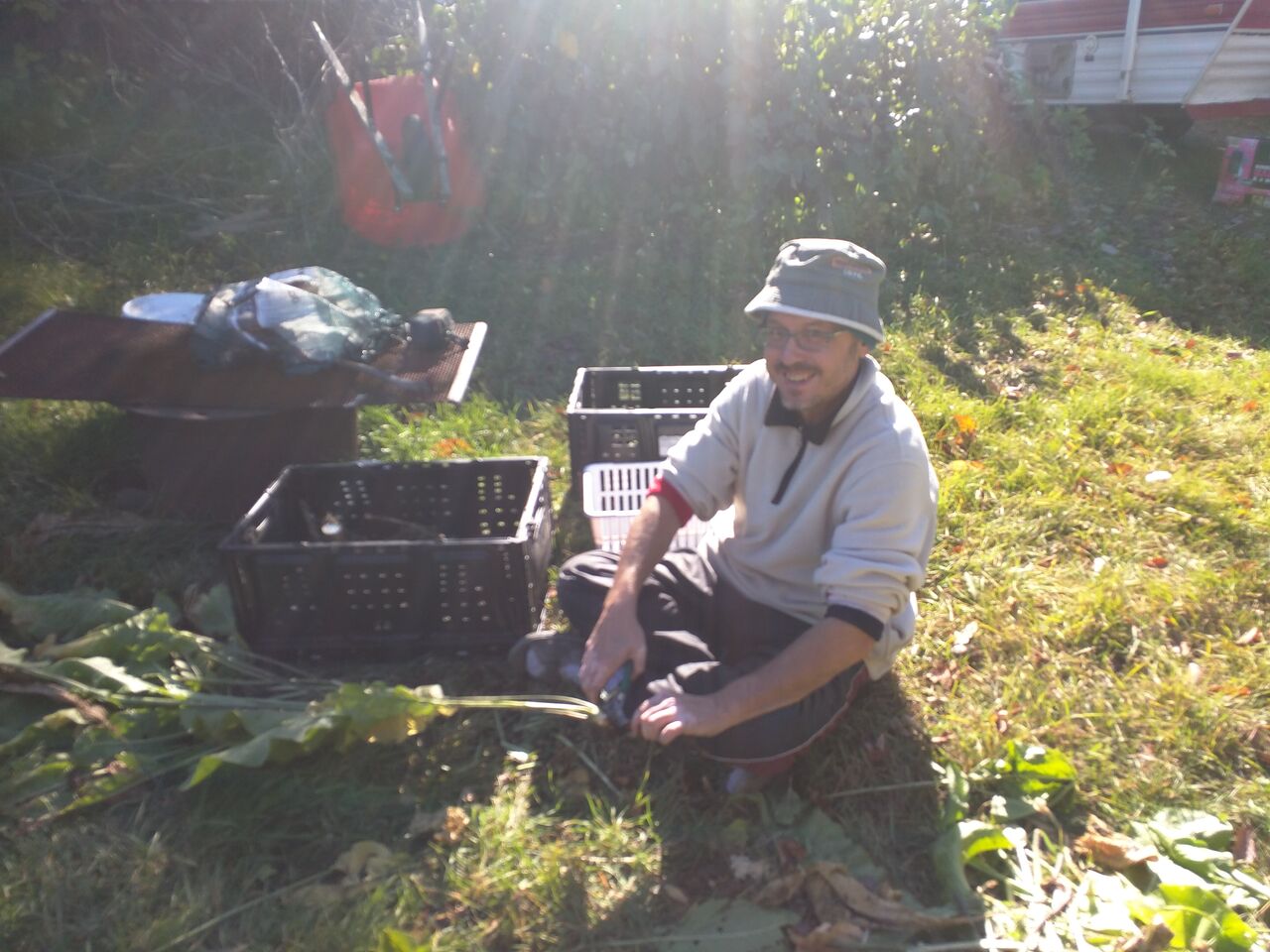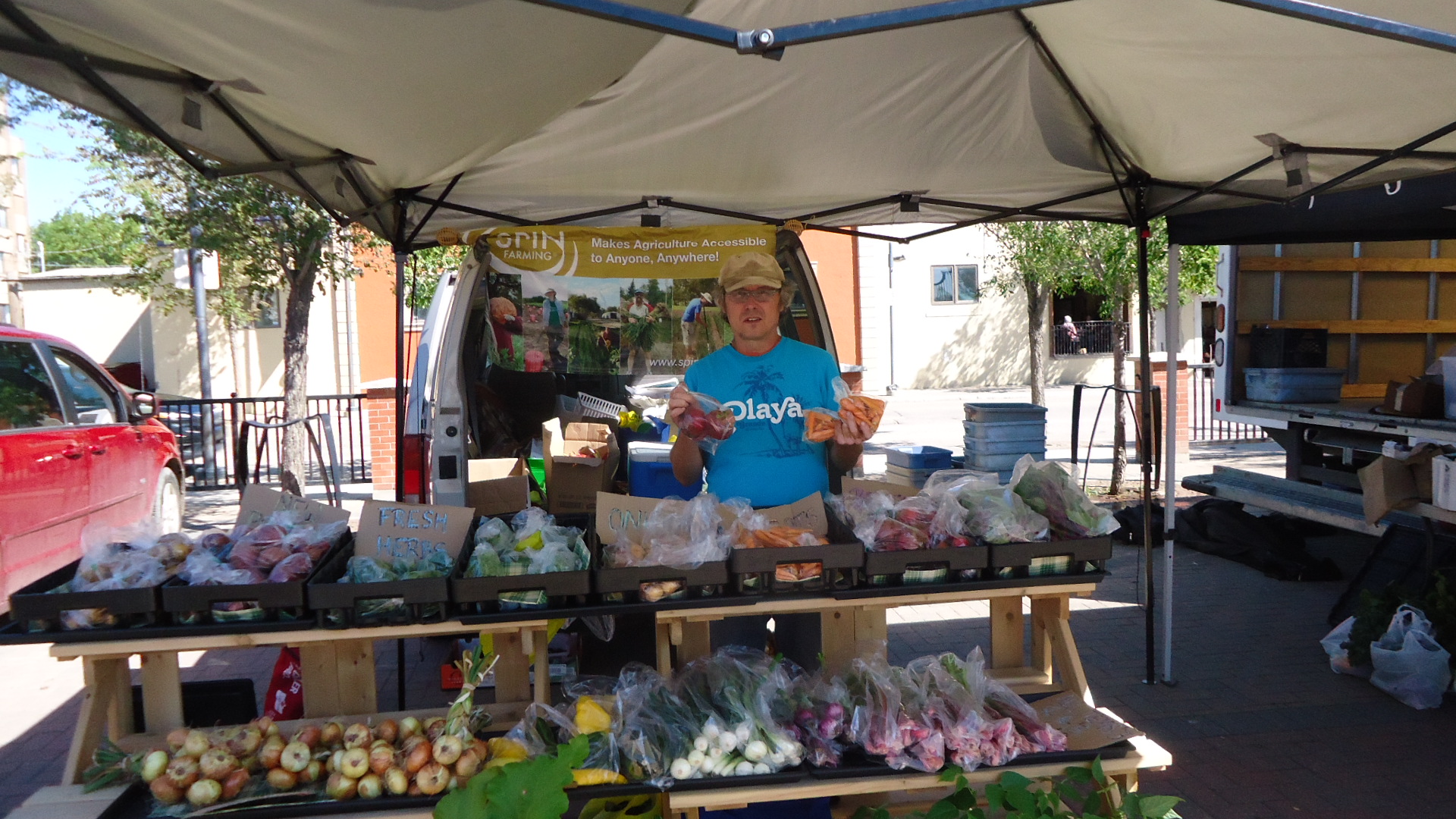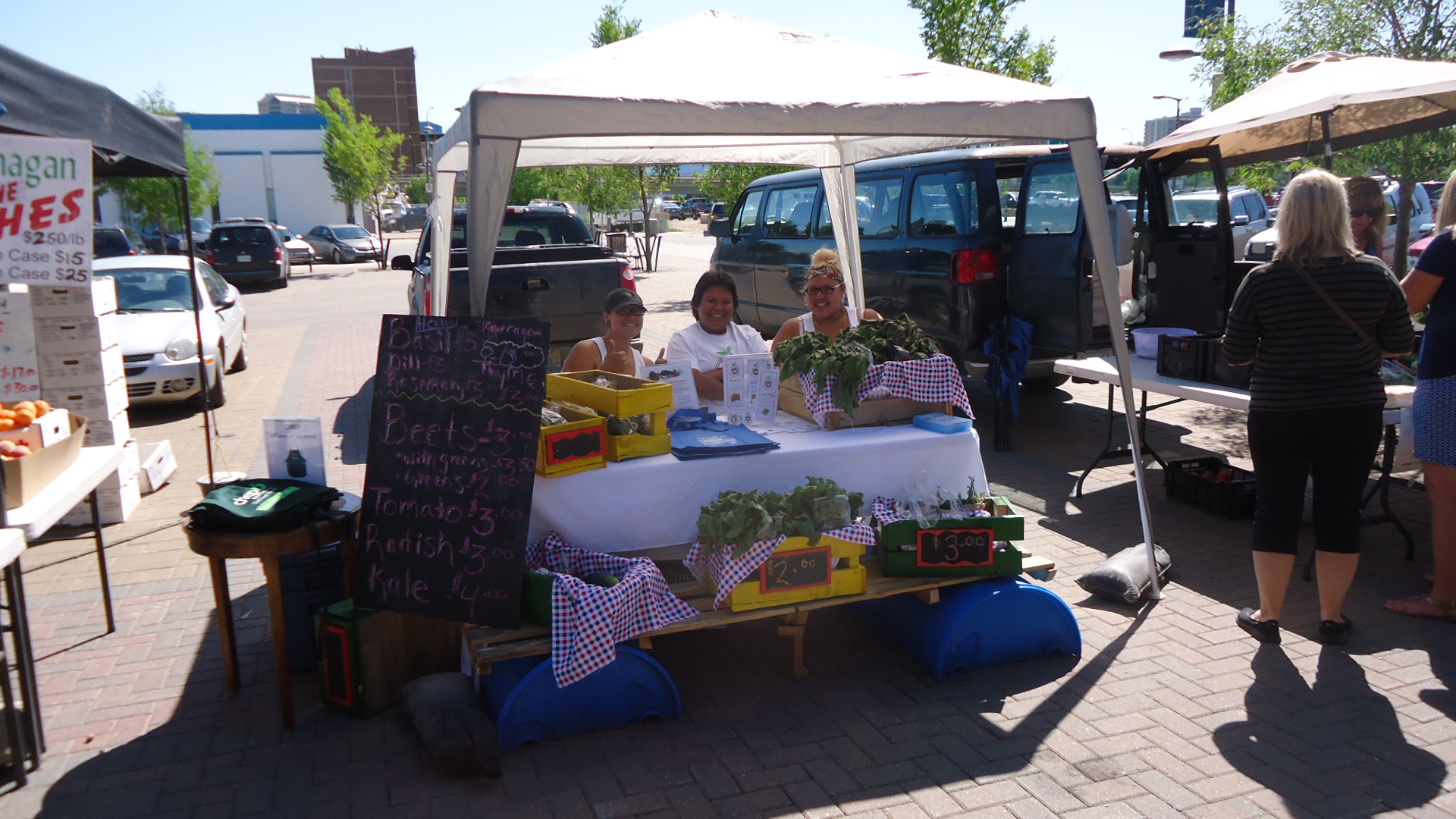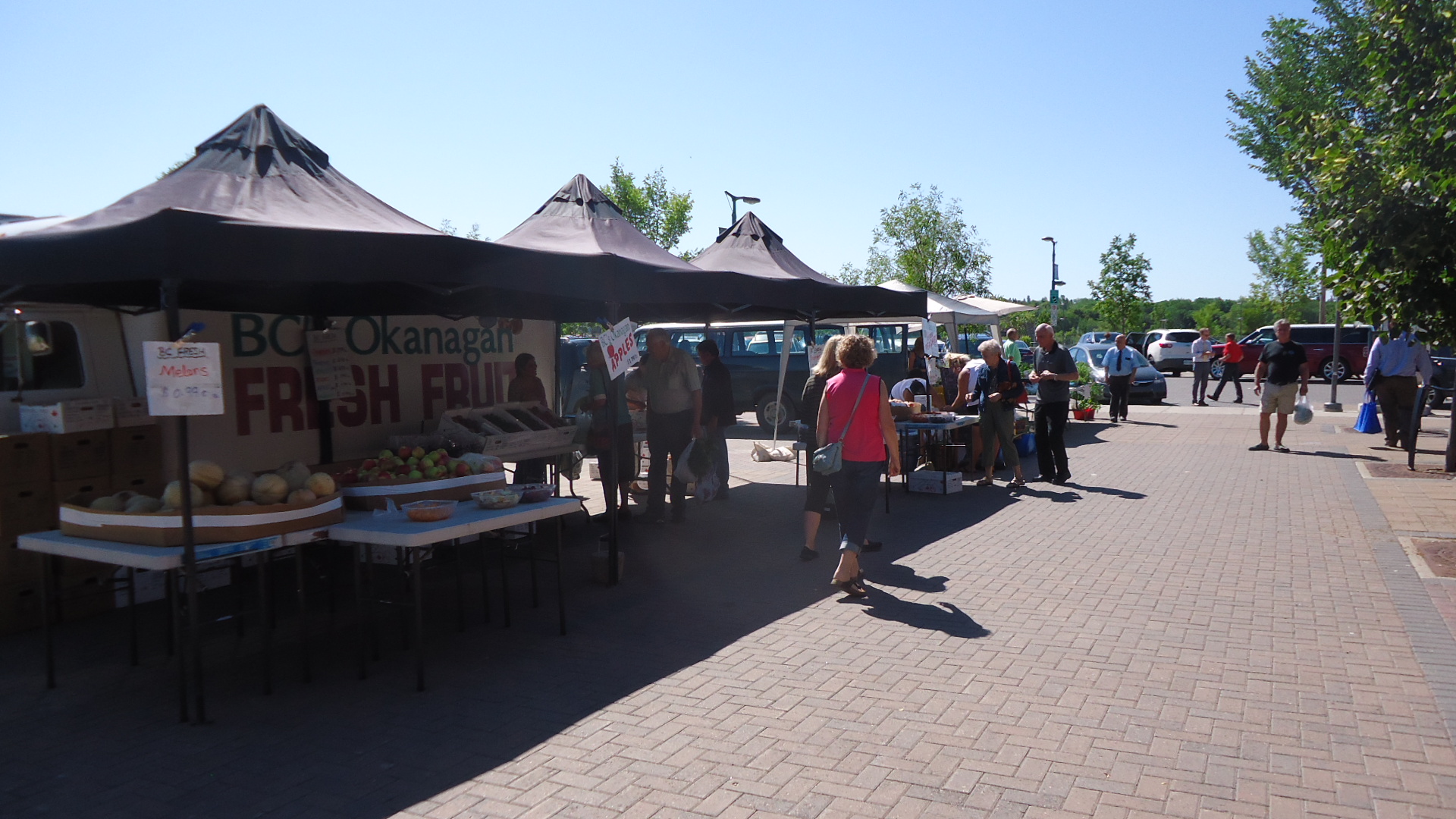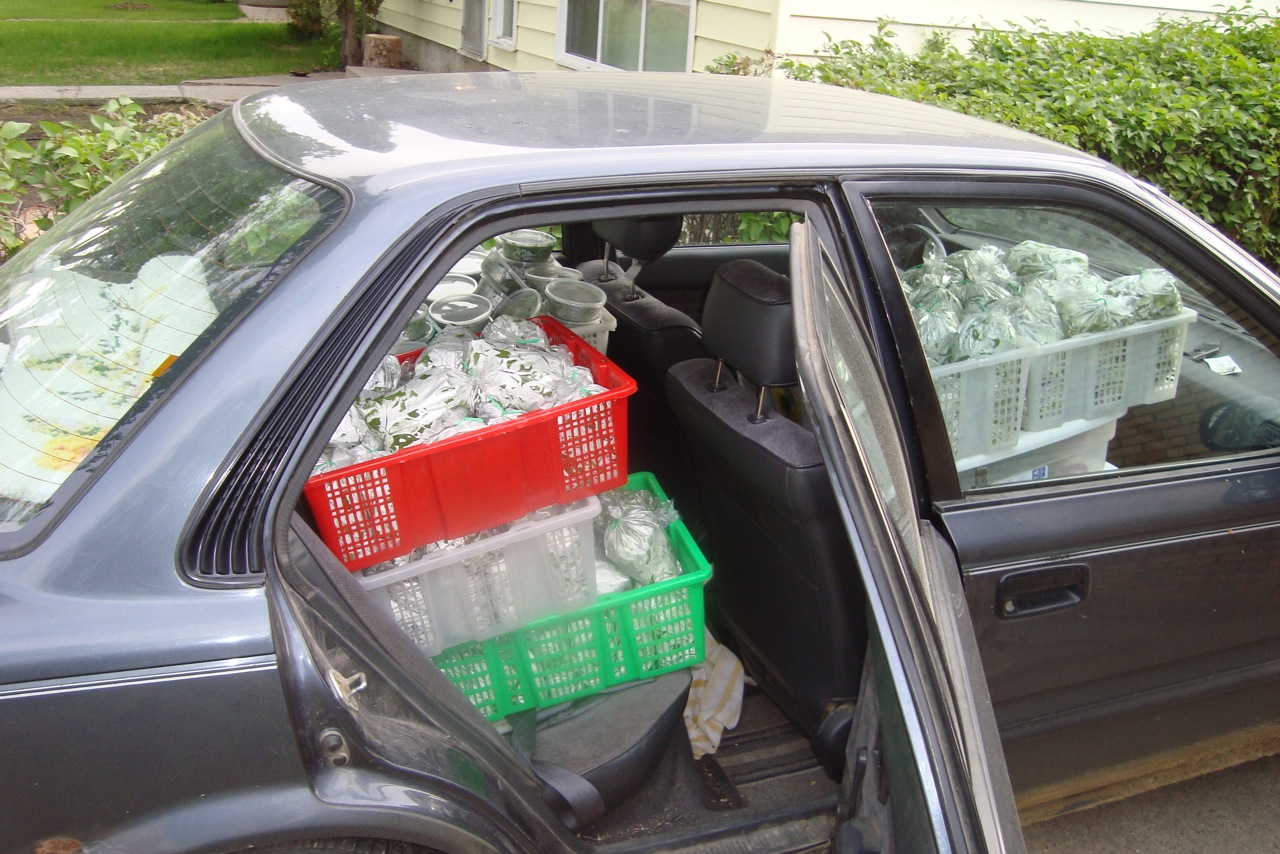Courtesy of Bryon H., Saskatoon SK
This week I had quite an interesting experience. Wally took me out to one of his backyard plots to harvest horseradish. What I was expecting was a typical looking SPIN plot with beds. When we got there it was barely noticeable what we were going to harvest! Once we walked to a back corner of the lot Wally pointed out the horseradish patch,an area that was teeming with plants.

The more shocking event was actual harvesting. The harvestable part of horseradish is the root portion. They establish very deep roots which are very difficult to harvest completely. The good thing is that those unharvested portions will grow back aggressively the next year. Being a perennial, horseradish is a very low maintenance crop.

Now the difficulty with this crop is the marketing and selling. A lot of people have never purchased and processed fresh horseradish. I’ve had some success at market today with offering a small sample to cook with and explaining a simple recipe. Two of the customers I did this with ended up actually purchasing a bag of horseradish.
Alternatively this is a much more marketable crop to restaurants. A chef who is a regular at the farmers market picked up five pounds and said he wanted another five pounds on the weekend!

One thing I’d like to touch on that is a huge SPIN farming principle, workflow. Yesterday Wally and I were slicing pumpkins for sale, and he commented on something I really took notice of. Ideally your work flow once organized should be fast and efficient, but as Wally had to remind me today is that it’s never worth working panicked.When you are rushing it is too easy to miss details or steps which could result in inferior quality produce being sold or damaging some of your own equipment. The former possibly resulting in a poor first impression, reducing the chances of customers returning and probably eliminating the chance of them becoming a word of mouth advertiser for you.
It was a lot of fun trying to sell a niche product like horseradish. I noticed that the cultures who traditionally cooked horseradish were much more comfortable buying it. It is probably worth it to do some research on your city’s demographics and see which vegetables are used in those cuisines when deciding which new crops to test out.
